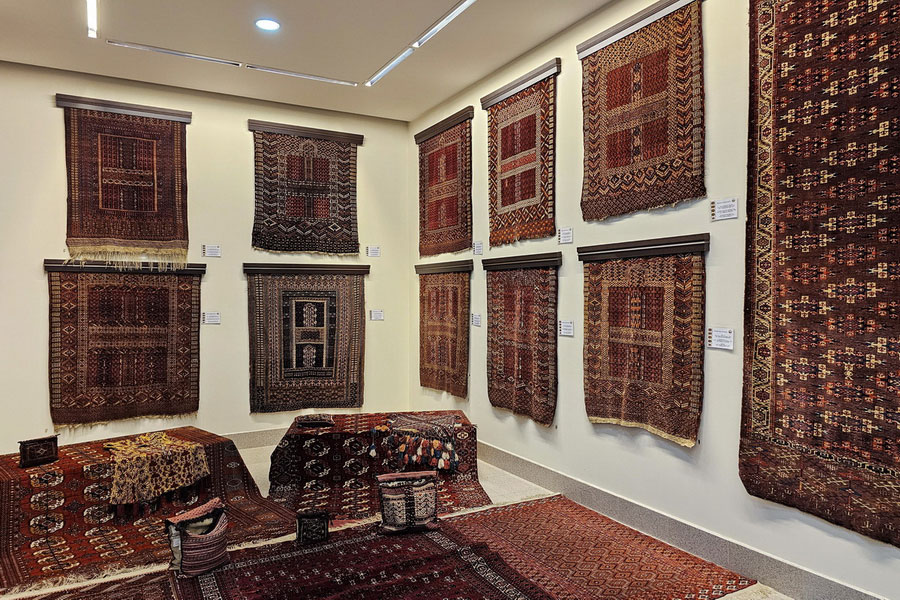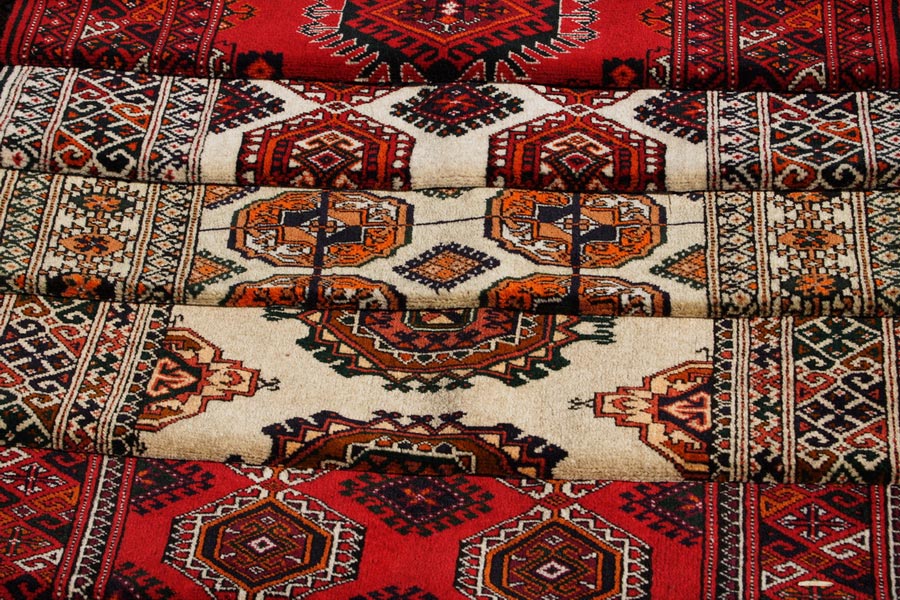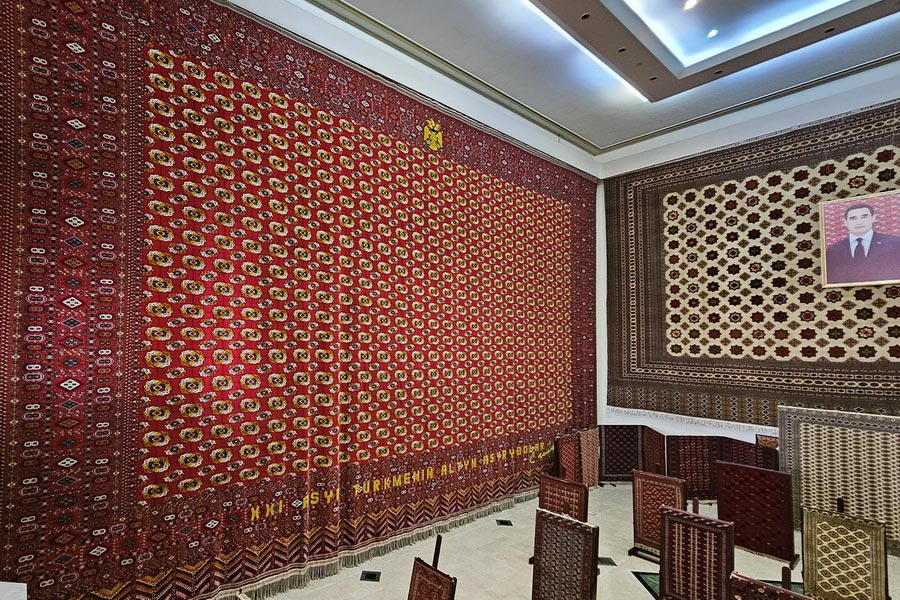
Address: Ashgabat, Hero of Turkmenistan Atamurat Niyazov Avenue, 158
Working Hours: 09: 00-17: 30 (Mon-Fri), 09: 00-13: 00 (Sat), closed Sundays
Lunch: 13: 00-14: 00
Paid Entrance
The National Carpet Museum in Ashgabat is located in the city center near the State Association of Turkmen Hali. The museum was established by decree of the President of Turkmenistan in 1993 with the aim of preserving, reviving and creatively developing the time-honored tradition of Turkmen carpet weaving.
Precisely when and where carpet weaving originated in the world remains a mystery. However, there is clear evidence that handwoven rugs have been produced in Turkmenistan since ancient times. Archaeologists have discovered loom equipment dating from the 4th to 3rd centuries BC, and during excavations in the Sumbar Valley in southwest Turkmenistan, 2nd-century BC bronze carpet knives were also unearthed.
The first written record of the famous Turkmen carpet is from Marco Polo, the Italian traveler who visited Eastern Europe and Asia in the 13th century. He praised the carpets, calling them "the most delicate and beautiful in the world." The explorer was not alone in his adulation of the local rugs, which have long been distinguished for their beauty and durability, with the quality of the fabric counted among the finest in the world.

Today in Turkmenistan, Carpet Day is observed annually to celebrate this national symbol. Turkmen traditional carpet motifs are present even on the national flag, where five famous gul patterns often found on Turkmen carpets can be seen on the flag’s vertical stripe. The shapes are arranged in a row to form a pattern, with supporting minor decor along the edge, and reflect the national unity of Turkmenistan. These five primary carpet designs are likewise depicted on the red band of Turkmenistan’s national emblem. Clockwise, they represent the Akhalteke, Salyr, Ersary, Chovdur and Yomut tribes, and together they also symbolize the friendship and unity of the Turkmen people.
At the National Carpet Museum, visitors can learn about the history of local rugs, uncover their distinctive qualities and discover how to decipher the pattern of an authentic Turkmen carpet. Listed in the top things to do in Ashgabat, visiting the museum provides a cultural deep dive into the heritage of Turkmenistan.
The museum, which encompasses an area of 15,000 square meters, includes exhibition galleries, production halls, scientific departments, warehouses and conference rooms. The scientific departments, where employees meticulously restore old carpets and study their historical and artistic value, is one of the most essential branches of the museum. Specialists handle a diverse variety of local carpets, all of which are considered state property, from Esari Turkmen rugs to the famous Tekke carpets.

Exhibition halls comprise a third of the museum’s total area. Items in the central folk art exhibits date back to the 17th -19th centuries, while 8000 carpets featuring various Turkmen rug motifs are augmented with unique displays and updated annually. The museum also guards the smallest handwoven carpet in the world, a keychain measuring .01 square meters and listed in the Guinness Book of Records, and one of the largest carpets on earth, which measures an astounding 301 square meters.
The Turkmen Carpet Museum offers guided tours in both English and Russian. There is also a gift shop where you can purchase a high-quality carpet and receive the necessary documentation for export from the Turkmenistan Ministry of Carpets, issued directly through the museum.
The National Carpet Museum in Ashgabat is an informative and colorful walk through the nation’s artistic history, one of many unique Turkmenistan experiences that travelers will not want to miss!

